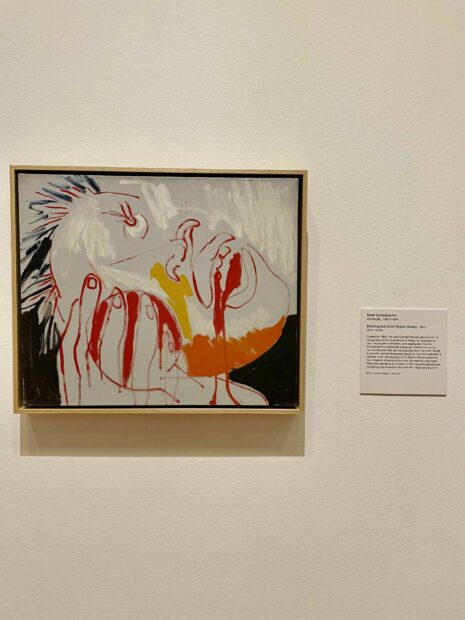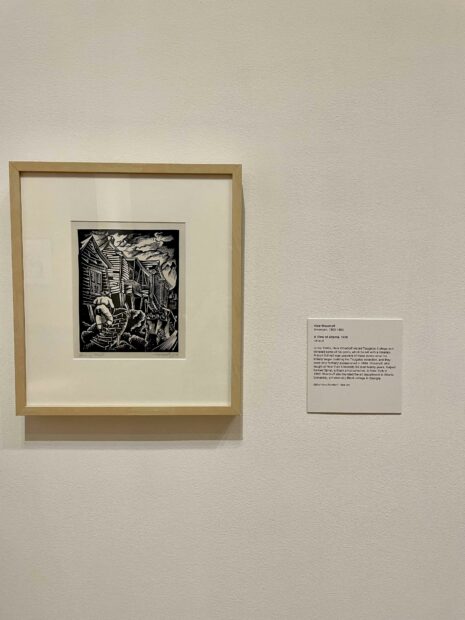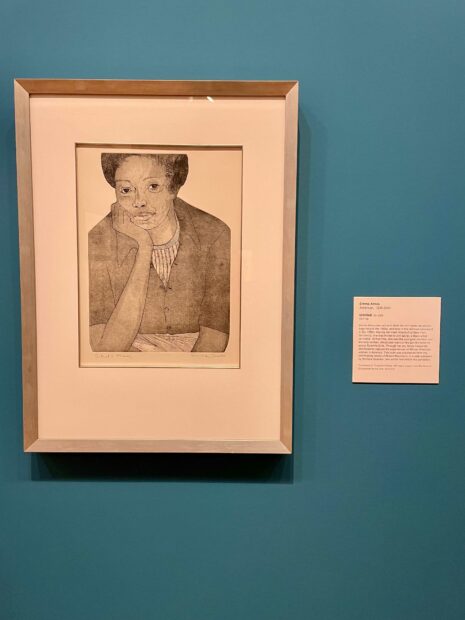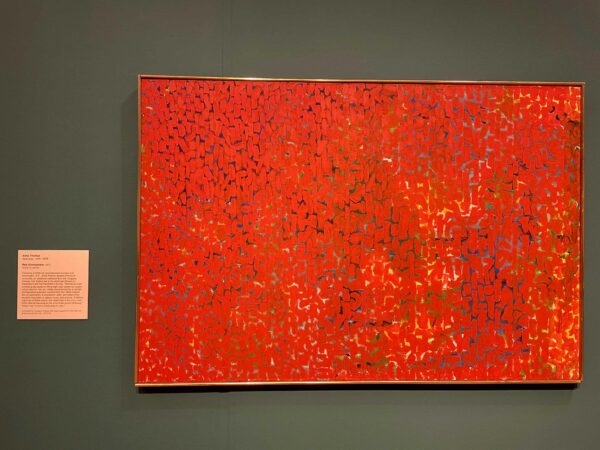The year of 1963 was cataclysmic. Medgar Evers, Field Secretary for the NAACP, was fatally shot in front of his Jackson, Mississippi home, the day after President John F. Kennedy delivered his nationally televised address on the state of civil rights. Then, four months later, President Kennedy was assassinated in Dallas. At the beginning of the year, George Wallace was elected governor of Alabama, proclaiming in his inaugural speech, “segregation now, segregation tomorrow, and segregation forever,” and later he literally blocked the front door of the University of Alabama with his own body to protest against integration. This was also the year Martin Luther King, Jr. issued his Letter from Birmingham Jail, declaring that “injustice anywhere is a threat to justice everywhere.” Meanwhile, members of the Klu Klux Klan bombed the 16th Street Baptist Church in Birmingham, killing four young Black girls. This is the year that inspired singer Nina Simone to compose the song Mississippi Goddam: “My country is full of lies. We’re all gonna die, and die like flies. I don’t trust nobody anymore.”
Keep this in mind when you discover that 1963 is also the year the first modern art collection in the state of Mississippi developed. While this may seem like ordinary news, it’s where the art collection is housed that’s the real story. Nestled just twenty minutes north of the state’s capital of Jackson sits Tougaloo College, a small, historically Black liberal arts school. Can we just stop a moment to reflect on this? At a time when many of the faculty and students attending Tougaloo College were banned from entering public libraries and galleries in segregated Jackson, they gained access to the modern art styles of Europe and New York, right there on campus.
Adding another layer to this is that Tougaloo was at the heart of the civil rights movement, as it was where many of the movement’s leaders would convene. Tougaloo was an integrated college; the civil rights movement was an integrated movement. So when their leaders and participants intersected, Tougaloo was one of the few, if only, public places the group could meet in the area. The college’s staff and students were also active members of the movement. A segregated public library in Jackson was the site of one of the first acts of civil disobedience in Mississippi, when nine students from Tougaloo College, who became known as the Tougaloo nine, did a read-in. The founding year of the art collection — 1963 — was also the year of the now-famous Woolworth’s lunch counter sit-in in Jackson. The participants of that sit-in were students and professors from Tougaloo College.
What sparked my journey through this part of our nation’s history? Just a few hours north of Dallas-Fort Worth, at the Oklahoma City Museum of Art, I had the opportunity to view a traveling exhibition highlighting works from the Tougaloo art collection. Art & Activism at Tougaloo College features thirty-five pieces, and although the exhibit is small, it represents a large, powerful story. A story that was completely new to me, and I imagine new for many of my fellow Texans as well.
So how did the first modern art collection of the state of Mississippi develop at Tougaloo? First, understand that the college was founded by the abolitionist-led American Missionary Association in 1869 to educate recently freed enslaved people and their descendants (other colleges they helped to establish include Fisk University, Hampton Institute and Howard University), and the fight for equality has been central to Tougaloo’s mission ever since. By 1963, a group of artists, art collectors, and art critics, like Jeanne Reynal and Dore Ashton, formed the New York Art Committee for Tougaloo College to create an art collection as a means to bridge racial divisions, viewing art as a tool for social justice.
What were some of the first artworks collected? Well, you’ve got works by Pablo Picasso, Henri Matisse, Francis Picabia, and Philip Guston, among many other established names of modern art. By the end of the 1960s, the students and faculty at Tougaloo pushed for acquiring artists and artworks that better represented themselves and their African American community, leading to the development of relationships with artists like Romare Bearden and David Driskell. Dr. Ronald O. Schnell, an art professor and the first curator of the Tougaloo College Art Collections, initiated the African American Collection with two prints donated to the college by Hale Woodruff, who had first visited the campus in 1943 to paint and lecture.
By 1971, thanks to a grant from the National Endowment for the Arts, the collection expanded to living artists of color like Beaden, Jacob Lawrence, Alma Thomas, Robert Blackburn, Emma Amos, and Elizabeth Catlett, who believed that “art is only important to the extent that it aids in the liberation of our people. I have always wanted my art to service my people — to reflect us, to relate to us, to stimulate us, to make us aware of our potential.”

Ethel Schwabacher, “Birmingham (Civil Rights Study),” 1963, oil on canvas, Tougaloo College Art Collections
For some of the artists represented in the Tougaloo collection, modern art offered possibilities to incorporate principles of social reform and the ideals of civil rights. For example, Ethel Schwabacher departed from abstraction and turned to figuration in her artwork Birmingham (Civil Rights Study). The painting depicts the face of a man as he holds his bloody head, speaking to the political and social climate in America as images like this proliferated through the media covering civil rights marches and demonstrations. Although completed in 1963 and intended to represent the contemporary violence perpetrated throughout the American South, the subject of this artwork resonates 60 years later, as our country continues to witness the brutality many citizens of color face today at the hands of the police.
Included in the collection is an early, undated etching (purchased in 1973) by the Atlanta-born Emma Amos, made when she was focusing on scenes of Black middle-class domestic life. Amos was active in the civil rights movement in the 1960s. In 1964, Woodruff — also represented in the Tougaloo collection — had invited Amos to join Spiral, a Black artist collective in New York City, making her both its youngest member and the only female member.
Artists like Woodruff and Bearden organized the group in response to the 1963 March on Washington advocating for racial equity. Spiral artists wrestled with questions like: what relationship should artists have with the social and political concerns of Black Americans? How do artists continue making work in this divisive moment? I think these questions are still pertinent for today’s artists as well. For Amos, “It’s always been my contention that for me, a Black woman artist, to walk into the studio is a political act.” Today, Amos is known for her brightly colorful figurative paintings, which weave her love for textiles directly into her canvases, and she has long been recognized as an important figure in American art.
Another Georgia-born artist included in the Tougaloo collection is Alma Thomas. Though her early work was initially realistic and figurative in approach, by the 1960s Thomas identified with Color Field painters. With their explosive color and form, her luminous abstract paintings, like 1973’s Red Atmosphere, may seem incongruous with the political climate of the era. Living in Washington, D.C. in the 1960s, Thomas witnessed the many protests taking place in the nation’s capital. In fact, she herself attended the 1963 March on Washington for Jobs and Freedom. The first woman to earn a degree in art from Howard University, as a Black woman artist, Thomas encountered many barriers. However, she did not like the label of “Black artist”; she instead saw herself as simply a painter and an American. She chose to find meaning beyond racial and gender constraints and focused on the pursuit of beauty “rather than on man’s inhumanity to man.” In 2015, one of her works became the first piece of art by an African American woman to enter the White House collection, when the Obamas hung Resurrection (1966) in the White House dining room.
In his 1962 talk “The Artist’s Struggle for Integrity,” James Baldwin argued that, “your pain is trivial except insofar as you can use it to connect with other people’s pain; and insofar as you can do that with your pain, you can be released from it, and then hopefully it works the other way around too; insofar as I can tell you what it is to suffer, perhaps I can help you to suffer less.” There was a lot of pain experienced and witnessed by many of the artists represented in the early formations of the Tougaloo College Art Collections. Having lived during the age of the Civil Rights Movement, these artists digested the constant proliferation of visual imagery of anger and resistance moving across the country.
Although today we live in the 21st century, the battles of the 1960s don’t feel so distant. Started in 2013, the efforts of the Black Lives Matter movement continue to reverberate across the nation, as people seek to highlight racism, combat race-based police brutality, and campaign against hierarchies of racial inequality. Likewise, at a time when the country is in distress and history is being rewritten by lawmakers who are trying to restrict access to healthcare for women and transgender people, manipulate the foundations of our democracy by limiting access to voting (primarily affecting people of color), and whitewash the textbooks with which we educate our children, the stories that Tougaloo’s collection represent seem more relevant than ever.
With over 1,500 works, today the Tougaloo collection is divided into three areas: the American Collection, the European Collection, and the African & Oceanic Collection. If you plan on traveling beyond the borders of Texas this year, a selection of works from the collection is on display in the exhibition Art & Activism at Tougaloo College. It will travel to Harrisburg, Pennsylvania at the Susquehanna Art Museum (June 10 – September 10, 2023) and then on to Davenport, Iowa at the Figge Art Museum (October 7, 2023 – January 28, 2024). For those unable to view the exhibit or visit Tougaloo College, check out the accompanying publication of the same name that was published last year (2022), with essays by Turry M. Flucker, the former the Director and Curator of the Tougaloo College Art Collections, as well as contributions from Michael Neumeister and Asma Naeem, the first person of color to direct the Baltimore Museum of Art.
Art and Activism at Tougaloo College is on view at the Oklahoma City Museum of Art through May 14, 2023.





